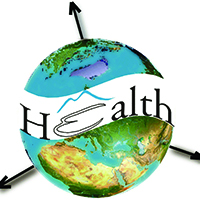Geo-epidemiological reporting and spatial clustering of the 10 most prevalent cancers in Iran

Accepted: 15 November 2020
HTML: 131
All claims expressed in this article are solely those of the authors and do not necessarily represent those of their affiliated organizations, or those of the publisher, the editors and the reviewers. Any product that may be evaluated in this article or claim that may be made by its manufacturer is not guaranteed or endorsed by the publisher.
Authors
Cancer is a problem of both global and local concern. We determined the geo-epidemiological and spatial distribution of the 10 most common cancers in Iran. We used the data of the Iranian Cancer Registry for the year 2014 analysing the prevalence of 112,131 registered cancer cases with the aim of detecting potential geographical underlying causes. The geographic distribution of cancers is reported as standardized incidence rates at the provincial level considering risk with respect to sex and age. A geographical information systems (GIS) approach based on Anselin Local Moran's index method was used to map clusters and spatial autocorrelation patterns. The mean age of the patients was 55.6 (±17.8) and 61.7 (±18.2) for females and males, respectively, in the database which showed 46.1% (n=51,665) of all cases to be female. Analysis of the spatial distribution of cancers showed significant differences among the different provinces. Stomach and breast cancers were the most prevalent cancers in men and females, respectively. The highest incidence rates of stomach cancer were found in Ardabil and Zanjan provinces, with 48.38 and 48.08 per 100,000 population, respectively, while Tehran and Yazd provinces had the highest incidences of breast cancer, 51.0 and 47.5 per 100,000 population, respectively. Strong clustering patterns for stomach and breast cancers were identified in the north-western provinces and in Semnan Province, respectively. These patterns indicate a diversity of geo-epidemiological contributing factors to cancer incidence in Iran.
How to Cite
PAGEPress has chosen to apply the Creative Commons Attribution NonCommercial 4.0 International License (CC BY-NC 4.0) to all manuscripts to be published.

 https://doi.org/10.4081/gh.2021.904
https://doi.org/10.4081/gh.2021.904




